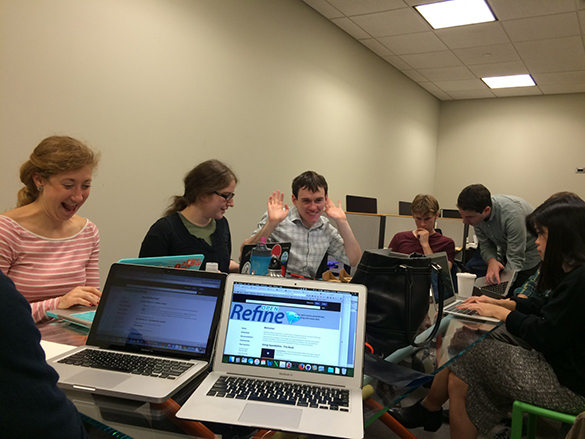Kathleen Fitzpatricks’s emphasis on the importance of blogs in the maintenance, creation, and development of critical thought and academic communities, lead me to consider the function of “blogs” in academic teaching. Particularly, first-year writing.
I’ve taught writing courses and seminars using a WordPress blog for 3 or 4 semesters now (funny that I can’t really remember) – – – and have always struggled to get my students to use it. I’ve even struggled to get them to join it. Part of the issue was, clearly, the fact that I didn’t really know how to use these blogs myself – – – at least not “optimally.” (I’m hoping to attend a WordPress workshop before teaching again next year!)
But another part of the problem seems to run deeper – even, as Kevin pointed out on Monday – in our own DH Praxis class.
Along with student resistance to engaging with new (or really, unknown and thus intimidating) technical skills, the problem seems to be linked to the fear of exposing oneself online (as discussed last night). Exposing oneself in writing (which we are taught must be perfect, or precious), exposing oneself in permanence (rather than aloud, with no recording), and exposing oneself in front of peers and teacher(s), who might pass judgement for all sorts of reasons (this post is too long (I know), this post is too academic or too casual, this post is too short, this post is offensive, this post is irrelevant etc.)…
I myself have struggled to post on this blog, and this of course feeds my interest in the matter. Why? Perhaps its because, when I asked my own students to “post on the blog before every class,” it lead to a very difficult classroom situation. We all ended up repeating the same ideas over and over again. Because of this experience, I may have some illogical fear of being somehow forced to repeat myself, or to choose between ideas expressed “in class” and “on the blog.”
I admit that I have, at times, withheld a thought in class, deeming it “better for the blog.” I decide that I need more time to think it out; that I can express it better in writing. I’ll take copious notes, then go home with every intention of posting my thoughts. But then when I type it out, I get in over my head. Is the comment still relevant, has it become too heavy, long, or intricate in writing… too “developed”? Not blog-worthy. Turns out that if you “hide” a thought in order to work it out alone, expressing it can become a far more difficult task. I think this speaks to Kathleen’s ideas of being transparent rather than hidden, thinking and writing “in real time” rather than in time… delays.
I wonder how we can make classrooms – and academic communities – work both “in person” and “online.” How do you teach effectively both in person and with a blog? Matt & Kevin’s suggestion to post on this blog only 4 times, on subjects that are not often addressed in class discussions – is a far better model than ones I have used in my own classes. I’m definitely going to try to take this strategy to my writing classes. I’ve addressed the classroom community with “real time” “draft workshops” for each student’s paper, but I’d love to create an online community for the students to communicate about undiscussed topics, too. Perhaps the “draft workshop” can even go online. I see some connections here.
And as for the (serious) issue of self-consciousness in “public,” in writing, or “online.” that’s probably just a matter of getting used to the blog form. I still have far to go as both a student and a teacher – – –


